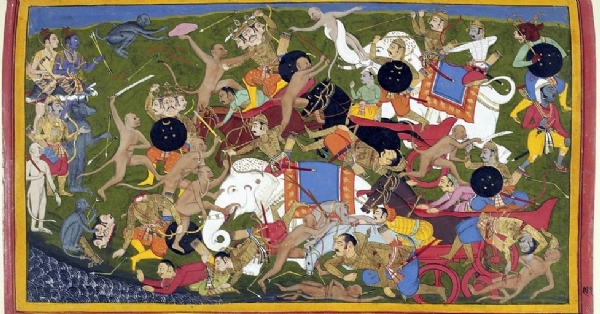NB Twitter Scan | Did you know these versions of Ramayana from different countries
Each version has its own unique cultural and regional influences that make it distinct from the original Indian version.
Total Views |
The Ramayana is an ancient Indian epic that has been retold and adapted in various versions in different countries over the centuries. You can easily see the traces of the legends in the Ramayana in Indonesia, Cambodia, Laos, Philippines, Malaysia . In all these countries, stage performances of Ramayana are also quite popular.

India: The original Valmiki Ramayana is the most well-known version of the story in India. There are also many other versions of the Ramayana in different Indian languages, such as the Tulsidas Ramayana in Hindi, the Kamba Ramayana in Tamil, and the Ezhuthachan Ramayana in Malayalam.
Indonesia: The Ramayana is known as the Kakawin Ramayana in Indonesia and is believed to have been composed in the 9th century. It is written in Old Javanese and tells the story of Rama and Sita, as well as their journey to the island of Lanka.
7. Cambodia : The Reamker pic.twitter.com/dAnR63ZZqa
— Raghu (@IndiaTales7) March 30, 2023
Thailand: The Thai version of the Ramayana is known as the Ramakien and is believed to have been written in the 18th century. It is similar to the original Indian version but has some unique twists, such as the fact that Ravana has ten heads instead of the traditional 10.
Cambodia: The Cambodian version of the Ramayana is known as the Reamker and was written in the 16th century. It is based on the Indian version but has been adapted to include some elements of Cambodian culture.
Philippines: The Ramayana has been adapted in the Philippines as the Maranao epic Darangen, which is believed to have been composed in the 14th century. It tells the story of the hero Bantugan, who is similar to Rama, and his journey to rescue his wife.
Malaysia: The Hikayat Seri Rama is the Malaysian version of the Ramayana, which was likely influenced by the Indonesian version. It is believed to have been written in the 15th century.
Laos: The Lao version of the Ramayana is known as the Phra Lak Phra Lam and is believed to have been composed in the 17th century. It has some unique twists, such as the fact that Ravana is depicted as a woman.
Nepal: The Ramayana is an essential part of Nepalese culture and has been adapted into various regional languages such as Maithili, Bhojpuri, and Nepali. The annual festival of "Bibaha Panchami" celebrates the wedding of Rama and Sita and is a significant event in Nepal.
Each version has its own unique cultural and regional influences that make it distinct from the original Indian version. Overall, the Ramayana epic has been adapted and retold in various forms in different countries, and has become an important part of the cultural and literary heritage of South and Southeast Asia.
.
.

